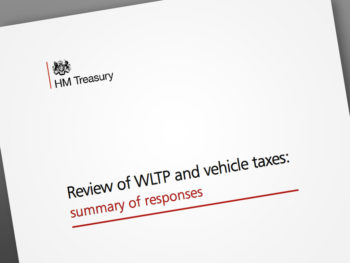Lack of WLTP CO2 data hampering company car decisions, says Venson
Carmakers must make WLTP CO2 data available now to enable fleets and drivers to calculate Benefit-in-Kind tax on vehicles for the next tax year and beyond.

Although the results of the long-awaited WLTP review are now in, fleets are being hampered in efforts to work out forthcoming BiK tax due to a lack of WLTP CO2 data
So says Venson Automotive Solutions as it warns that a lack of such data is hampering company car decisions following the Treasury’s publication earlier this month of long-awaited Benefit-in-Kind rates, which will be based on WLTP figures from 6 April 2020 along with Vehicle Excise Duty.
Since September 2018 all new cars have had to be tested under WLTP rules. However, in the current interim period – until the new tax year starts on 6 April 2020 – CO2 emission figures using a European Commission-developed mathematical tool known as CO2MPAS – have been converted back to a comparable NEDC value, known as NEDC Correlated and used for VED and Company Car Tax.
However, now that tax rates are known to the end of 2022/23, Venson says fleets and drivers are discovering that WLTP-based CO2 figures are not easily and readily accessible.
The firm’s research has also found that WLTP CO2 figures are invariably not available on the websites and online ‘car builder’ tools offered by many carmakers, with some saying WLTP CO2 data would not be published until closer to the new tax year.
Simon Staton, director of client management at Venson Automotive Solutions, said: “We are in an absurd position. Although the Government has only just published company car Benefit-in-Kind bands for 2020/21 and the following two financial years, it announced in the November 2017 Budget that WLTP CO2 information would be used for company car Benefit-in-Kind tax purposes from 6 April 2020.
“Following the Government’s company car Benefit-in-Kind tax band announcement we are being asked by customers and prospects to provide quotes on cars – including tax calculations – for delivery pre and post 6 April 2020, but the WLTP CO2 data is not available.
“We know that motor manufacturers have the WLTP CO2 data because the NEDC-Correlated or converted figure currently available for each car is derived from it. Therefore, it seems illogical that the information is not readily available so fleet decision-makers can review future company car choice lists – particularly where a CO2 emission cap is in place – and drivers can make decisions on their next company car.”
The need for the data is being heightened by the jump from the original NEDC figures for CO2 to full WLTP figures; as mentioned in the review, these are averaging 20-25% higher than under the previous NEDC regime and in some cases up to 40% higher.
Staton said: “With such variance in CO2 emissions between the old NEDC system, the current NEDC-Correlated regime and the new WLTP rules it means that Benefit-in-Kind tax will be higher on many company cars as a result of WLTP.
“That is despite the Government reducing most rates for cars first registered from 6 April 2020 by two percentage points in 2020/21 compared to those registered before 6 April 2020 before returning to planned rates over the following two years – increasing by one percentage point in 2021/22 and a further one percentage point in 2022/23.
“Therefore, when company cars are ordered, delivered and first registered – pre or post-6 April 2020 – is now a critical issue for fleet decision-makers and company car drivers. They need all the data in front of them to make the required calculations and decisions, but they cannot do so if WLTP CO2 information from motor manufacturers is not published and easily available.
“All motor manufacturers should immediately take the required action and publish comprehensive WLTP CO2 data now,” he urged.

















